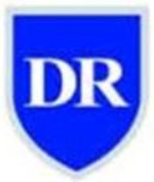A pilot controlled trial of a combination of dense cranial electroacupuncture stimulation and body acupuncture for post-stroke depression.
Man SC, Hung BH, Ng RM, Yu XC, Cheung H, Fung MP, Li LS, Leung KP, Leung KP, Tsang KW, Ziea E, Wong VT, Zhang ZJ.
Abstract
BACKGROUND:Our previous studies have demonstrated the treatment benefits of dense cranial electroacupuncture stimulation (DCEAS), a novel brain stimulation therapy in patients with major depression, postpartum depression and obsessive-compulsive disorder. The purpose of the present study was to further evaluate the effectiveness of DCEAS combined with body acupuncture and selective serotonin reuptake inhibitors (SSRIs) in patients with post-stroke depression (PSD).
METHODS:In a single-blind, randomized controlled trial, 43 patients with PSD were randomly assigned to 12 sessions of DCEAS plus SSRI plus body electroacupuncture (n = 23), or sham (non-invasive cranial electroacupuncture, n-CEA) plus SSRI plus body electroacupuncture (n = 20) for 3 sessions per week over 4 weeks. Treatment outcomes were measured using the 17-item Hamilton Depression Rating Scale (HAMD-17), the Clinical Global Impression - Severity scale (CGI-S) and Barthel Index (BI), a measure used to evaluate movement ability associated with daily self-caring activity.
RESULTS:DCEAS produced a significantly greater reduction of both HAMD-17 and CGI-S as early as week 1 and CGI-S at endpoint compared to n-CEA, but subjects of n-CEA group exhibited a significantly greater improvement on BI at week 4 than DCEAS. Incidence of adverse events was not different in the two groups.
CONCLUSIONS:These results indicate that DCEAS could be effective in reducing stroke patients' depressive symptoms. Superficial electrical stimulation in n-CEA group may be beneficial in improving movement disability of stroke patients. A combination of DCEAS and body acupuncture can be considered a treatment option for neuropsychiatric sequelae of stroke.
Read more
BACKGROUND:Our previous studies have demonstrated the treatment benefits of dense cranial electroacupuncture stimulation (DCEAS), a novel brain stimulation therapy in patients with major depression, postpartum depression and obsessive-compulsive disorder. The purpose of the present study was to further evaluate the effectiveness of DCEAS combined with body acupuncture and selective serotonin reuptake inhibitors (SSRIs) in patients with post-stroke depression (PSD).
METHODS:In a single-blind, randomized controlled trial, 43 patients with PSD were randomly assigned to 12 sessions of DCEAS plus SSRI plus body electroacupuncture (n = 23), or sham (non-invasive cranial electroacupuncture, n-CEA) plus SSRI plus body electroacupuncture (n = 20) for 3 sessions per week over 4 weeks. Treatment outcomes were measured using the 17-item Hamilton Depression Rating Scale (HAMD-17), the Clinical Global Impression - Severity scale (CGI-S) and Barthel Index (BI), a measure used to evaluate movement ability associated with daily self-caring activity.
RESULTS:DCEAS produced a significantly greater reduction of both HAMD-17 and CGI-S as early as week 1 and CGI-S at endpoint compared to n-CEA, but subjects of n-CEA group exhibited a significantly greater improvement on BI at week 4 than DCEAS. Incidence of adverse events was not different in the two groups.
CONCLUSIONS:These results indicate that DCEAS could be effective in reducing stroke patients' depressive symptoms. Superficial electrical stimulation in n-CEA group may be beneficial in improving movement disability of stroke patients. A combination of DCEAS and body acupuncture can be considered a treatment option for neuropsychiatric sequelae of stroke.
Read more
